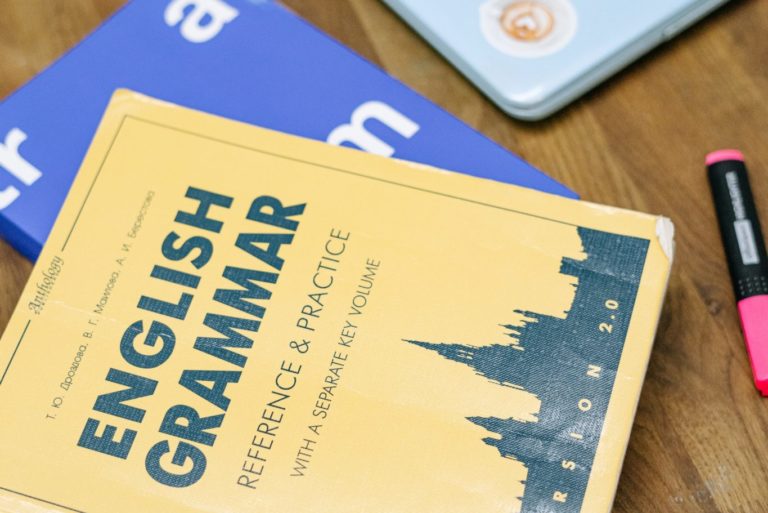What are adverbial and complement phrases?

This is the first of three chapters about Adverbials and Complements. To complete this reader, read each chapter carefully and then unlock and complete our materials to check your understanding.
– Introduce the concept of phrase functions in English grammar
– Focus specifically on identifying adverbials and complements
– Complete activities which check progress and understanding and improve English proficiency
Before you begin reading...
-
video and audio texts
-
knowledge checks and quizzes
-
skills practices, tasks and assignments
Chapter 1

Many students will have heard of grammar terms such as subject, object and predicate but may be unfamiliar with what these terms mean or why they’re so often discussed. Yet having a solid understanding of the five phrase functions is an important aspect of mastering English grammar and of improving proficiency to an academic level. This short three-chapter reader therefore aims to increase your understanding of phrase functions, focussing specifically on adverbials and complements. We explore how to form these functions using a variety of examples and provide guidance on including them in academic assignments such as essays.

As the above examples show, there are five such phrase functions in English, each of which may be comprised of one or many words. These five functions are:
- Predicates, which are the verb phrases at the centre of the clause
- Subjects, which are (most often) the doers of the action of the predicate
- Objects, which are (most often) the receivers of the action of the predicate
- Complements, which provide extra (but necessary) information about subjects and objects, either by renaming or further describing them
- Adverbials, which add extra (but often optional) information about the how, the where or the when of a verb, adverb, adjective, prepositional phrase or clause
Are any phrase functions optional?
Generally speaking, four of these phrase functions are mandatory and must be included for a sentence to be considered correct. This is exemplified in the two expressions below. When we remove their bold complements, these two sentences become incomplete and obviously ungrammatical:


Adverbials, however, are the one phrase function in English that is optional most of the time. In the next set of expressions, the sentences that are without their adverbials are still correct and well formed, even if some of the meaning is lost:


What do adverbials look like?
The best way of identifying an adverbial is to recognise that its primary function is to provide optional information to the main verb of an expression. In short, adverbials add to the meaning of a verb by expressing its how, when, where, how often or to what extent – usually through the addition of adverbs. We can see this in action in the below examples in which the verb being modified is in [square brackets] and the adverbial is bold:

(how) My students [speak] English fluently.
(when) My students now [speak] English fluently.
(where) My students [study] English in the classroom.
(how often) My student [study] English every day.
(to what extent) My students [study] English as hard as they can.
Adverbials are not only composed of adverbs however, nor do they exclusively add information to verbs. Adverbials may be prepositional phrases, for instance, or noun phrases, and they may provide additional information about adjectives, other adverbs, prepositional phrases or whole sentences. As in the previous set of examples, the element being modified has been placed into [square brackets] in the four sentences below:
(adjective) The results of the study were quite [fascinating].
(adverb) The students are studying remarkably [diligently].
(prepositional phrase) The staff are truly [in a lose-lose situation].
(whole sentence) Nevertheless, [the study was a success].
For more detailed information about adverbials, press on to Chapter 2.
Are complements easy to recognise too?
As a phrase function which cannot be omitted from its expression (unlike an adverbial), it’s very important that students learn how to identify and correctly form complements in their own writing. Thankfully, complements can also be fairly easily recognised provided we understand their function and their form. While adverbials most commonly provide additional (optional) information about a verb using adverbs, complements instead most commonly use adjectives to modify the subject or object of a given expression.
Complements generally do this in two ways. There are predicate nominatives in which the complement provides another name for a subject or object, such as how ‘teacher’ in example (1) is another label for ‘James’, and there are predicate adjectives in which the complement offers more information about that noun phrase, such as how ‘James’ is ‘tired’ in example (2).


While (1) and (2) are examples of subject complements in which the subject [James] was being modified, object complements are when the direct objects of an expression [the student; the students] are the ones that receive that nominative (3) or adjectival (4) post modification. Indeed ‘post’, meaning after, is a key word to remember here. While it may be much more common for English adjectives to pre-modify the subjects and objects they describe, with subject and object complements the modifying words that form that complement are almost always placed after the noun phrase rather than before it.

While (1) and (2) are examples of subject complements in which the subject [James] was being modified, object complements are when the direct objects of an expression [the student; the students] are the ones that receive that nominative (3) or adjectival (4) post modification. Indeed ‘post’, meaning after, is a key word to remember here. While it may be much more common for English adjectives to pre-modify the subjects and objects they describe, with subject and object complements the modifying words that form that complement are almost always placed after the noun phrase rather than before it.
Downloadables
Once you’ve completed all three chapters in this short reader about Adverbials and Complements, you might then wish to download our Chapter Worksheets to check your progress or print for your students. These professional PDF worksheets can be easily accessed for only a few Academic Marks.
Chapter 1 explores the topic: What are adverbial and complement phrases? Our Chapter 1 Worksheet (containing guidance, activities and answer keys) can be accessed here at the click of a button.
Chapter 2 explores the topic: Are adverbials helpful in academic English writing? Our Chapter 2 Worksheet (containing guidance, activities and answer keys) can be accessed here at the click of a button.
Chapter 3 explores the topic: How do subject and object complements differ? Our Chapter 3 Worksheet (containing guidance, activities and answer keys) can be accessed here at the click of a button.
To save yourself 2 Marks, click on the button below to gain unlimited access to all of our Adverbials and Complements Chapter Worksheets. This All-in-1 Pack includes every chapter, activity and answer key related to this topic in one handy and professional PDF.
Collect Academic Marks
-
100 Marks for joining
-
25 Marks for daily e-learning
-
100-200 for feedback/testimonials
-
100-500 for referring your colleages/friends